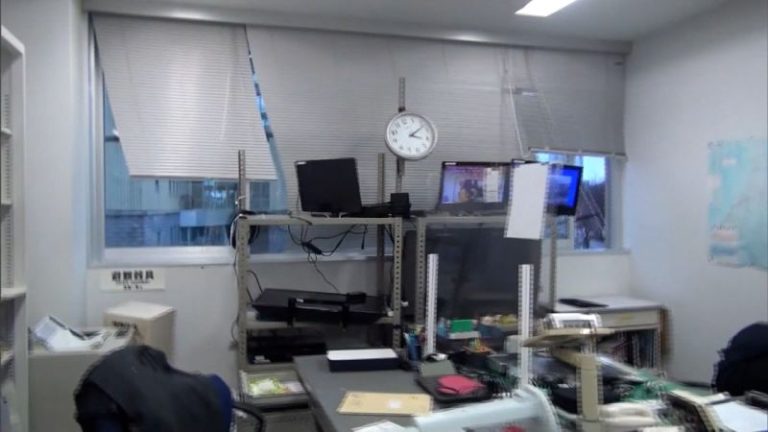Scenes of devastation emerged along Japan’s western coast Tuesday as rescuers raced to save residents trapped in the rubble of a 7.5 magnitude quake that has triggered multiple aftershocks and killed dozens of people.
The quake shook the Noto Peninsula in the central prefecture of Ishikawa on Monday afternoon, collapsing buildings, sparking fires and triggering tsunami alerts as far away as eastern Russia.
Japan’s Meteorological Agency lifted all tsunami advisories along portions of the country’s western coast Tuesday, but more than 24 hours after the quake struck, there has been limited access to the northern part of the secluded Noto Peninsula.
Prime Minister Fumio Kishida told reporters after a disaster emergency meeting Tuesday that a destroyed road had cut access to the area.
Officials in helicopters had flown over the peninsula, known for its coastal scenery and rural landscapes, and reported seeing damaged roads, landslides and large fires, he said.
“To secure the route there, we are to mobilize all the means of transport, not only on the ground but also by aerial and marine transport. We have been making an effort to transfer goods, supplies and personnel there since the last night,” Kishida said.
The coastal city is famous for its morning market and fine traditional lacquerware, but early surveys from the air on Tuesday revealed smoldering fires and large plumes of smoke engulfing streets of destroyed buildings.
More than 100 shops and houses had burned down in Wajima Monday evening after a fire broke out following the quake, Japan’s public broadcaster NHK reported.
Earlier the city saw tsunami waves of around 1.2 meters (3.9 feet), according to NHK.
While the extent of the damage from Monday’s quake is still being determined, it is far from the levels of destruction wrought by 2011’s 9.0 magnitude quake, which triggered a tsunami causing a nuclear meltdown at the Fukushima power plant, in a disaster that’s still being felt to this day.
Overnight rescue efforts
Prime Minister Kishida said Tuesday members of Japan’s Self Defense Force had joined police and fire emergency teams in rescuing people from devastated areas overnight.
“Rescue efforts are a battle against time. Especially the victims of collapsed buildings, have to be saved as soon as possible,” he said.
Japan’s fire department said Monday it was responding to reports of people being trapped under damaged buildings, NHK reported.
An elderly man who had been pulled from a house that collapsed in the quake was later confirmed to have died, according to NHK, citing police in Ishikawa.
Health officials in the city of Suzu said some doctors could not treat wounded patients because damaged roads meant they were unable to travel to work.
Meanwhile, 45,700 households in Ishikawa remained without power Tuesday, according to the power company Hokuriku Electric Power.
Following the quake, Japan’s Kansai Electric and Chief Cabinet Secretary Yoshimasa Hayashi said no abnormalities were reported at nuclear plants near the affected areas.
Four bullet trains, whose high-speed journeys were halted when the quake struck, trapping nearly 1,400 passengers inside for about 11 hours, resumed services Tuesday morning, according to NHK, citing Japan Railways West.
The high-speed trains had been stranded between the central cities of Toyama and Kanazawa following the 7.5 magnitude tremor.
Tsunami warnings lifted but threat of aftershocks remain
Monday’s powerful quake prompted the Japan Meteorological Agency to immediately issue a “major tsunami warning” – the first since 2011’s devastating earthquake and tsunami – for Noto but later downgraded it to a “tsunami warning.”
Tsunami warnings were later canceled as the threat of further tsunami waves diminished.
Under Japan’s tsunami warning system, waves expected less than 1 meter fall under “tsunami advisory,” while those expected up to 3 meters fall under “tsunami warning” and waves expected above 5 meters fall under “major tsunami warning.”
The first waves were reported hitting the coast just over 10 minutes after the quake.
Video shows a wave crashing over a protective sea wall in the western city of Suzu Monday.
According to the United States Geological Survey, at least 35 smaller aftershocks were reported near the epicenter of the quake.
Susan Hough, a seismologist with the US Geological Survey warned that aftershocks could last for months.
Hough said people living in that part of the country have felt quakes before, but she believes this is “the biggest earthquake by far” — which means most residents likely don’t have experience with a seismic event of this scale.
“An earthquake this big is going to continue to have aftershocks. It could easily have aftershocks bigger than magnitude 6, so that is going to be a hazard in its own right,” Hough said.

